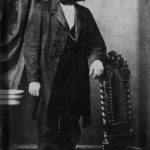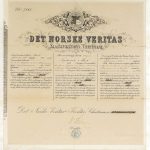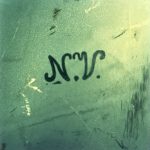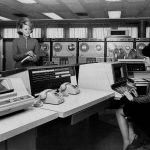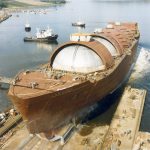The biggest merger in classification has succeded at DNV GL. The newlywed couple celebrates 150 years of company history, previous attempts to unite and many parallels in business history.
The beginnings: classification, a matter of trust
When emigrant ship »Restauration« arrived in New York in 1825, the[ds_preview] sloop was immediately confiscated by local authorities. Overcrowded with 52 Norwegians the tiny ship illustrates conditions aboard early 19 th century vessels. The arrival marked the start of an era of Norwegian emigration and shipping. Conditions aboard »coffin ships« but also in shipbuilding and insurance called for improvement.
By the middle of the century »reliable and uniform classification and taxation of Norwegian ships« had become so urgent that in 1864 membership organisation Det Norske Veritas (DNV) emerged from Norway’s mutual marine insurance clubs to define this goal. Locally organized they joined forces to establish uniform rules and procedures for assessing the risk of underwriting individual vessels. Given the background of a massive growth in Norwegian shipping, classification became a matter of trust as more and more ships set out for long voyages.
In those times of the political Union between Sweden and Norway, about fifty small Norwegian sailing ships started on a voyage from the coast of Norway each spring, not to mention those who carried Norwegian emigrants and goods from Swedish ports. The dense barks, brigs and schooners carried more than a hundred passengers each for at least twelve weeks across the Atlantic. Safety thus attracted high public attendance. A general increase in trade was fostered by a liberalisation in international maritime traffic. While Norwegian shipowners were seizing new opportunities they were still dependent on foreign certificates, issued by British Lloyd’s Register or French Bureau Veritas (BV). In foreign destinations, however, the trust of shippers and insurers still had to be won.
To satisfy this need for close and reliable classification at home and a reputation abroad, DNV was designed. Founded after lengthy and cumbersome negotiations DNV soon provided evidence of the technical standards, worked on a permanent basis and established a national ship register published in September 1865. This register provided all ships classed by the new society with additional valuable data like type, goods carried, level of maintenance and many technical features. Made available from specialised agents and regular bookshops, the register attracted many subscribers. DNV’s institutionalised tools for building trust were later modelled after this.
The purpose of the society was not only to inform but formulate rules and enforce them, a concept that questioned particularist and local maritime rules. Nevertheless, DNV applied the most widely accepted standards for building wooden ships. From 1865 to the 1870’s tonnage classed by DNV more than quadrupled. With experienced and high-ranking naval officers as chief executives, the society’s administration secured its authority. Recognition in Europe spread. Beyond, in South America and the West Indies DNV class was not recognized easily and the question how to compete with BV made the appointment of surveyors abroad essential.
The first association of German ship insurers, called »Hamburger Assecuradeure«, emerged in 1797. Its experts inspected vessels prior to insurance contracts but shipowners lacked access to the valuable information created. In Germany, however, shipping depended even more on BV. In the 1860’s shipowners often regarded this as an obstacle to further maritime evolution, as contemporary HANSA issues reveal. Shipping called for more transparency and consistency in classification.
First talks to form a German class society started in Bremen in 1850, and then a committee on related issues was initiated by local merchant August Behn in Hamburg in 1862 including prominent shipowners Godeffroy, Hertz, Schön and Sloman. The committee suggested the name »Germanischer Lloyd«. To become independent and competent on a background of emerging common national business interests was fundamental to shipowners and merchants resulting in the foundation of Germanischer Lloyd in Hamburg in March 1867. Franz Paetow, vice-consul in Rostock, worked for its expansion and became GL’s first director in 1868 after Behn had handed over to him.
Similar challenges in Germany and Norway soon led to early negotiations of a possible cooperation with DNV through a joint German Norwegian ship register, but talks opened by Behn proved unfruitful. DNV’s first executive Nils Ihlen tried to keep the question on the agenda, but to no avail. He was an expert in shipbuilding and led DNV for a total of 40 years. As Norwegian shipping was looking at Great Britain, Norwegian classification tended to work out similar rules like Lloyd’s Register. What is more, DNV did not approve of a common society with the Germans as a junior in a »Germanic and International Veritas« as designed by Behn. The war of Schleswig-Holstein in 1864 contributed to DNV’s aversion. Most of all DNV’s founders believed to be part of a nation building process which favoured the idea to keep DNV under its members’ control. Comparable Swedish attempts for a common class society were refused likewise.
The rise of DNV & GL: similar challenges, different concepts
In 1868 GL issued a ship register of its own in German and English which listed 273 ships classed by the society. Ships were not measured according to British standards but in tons which caused some debate about disadvantages for German competitiveness. The same year, DNV co-founder Morten Smith Petersen reported German classification had failed, a misinterpretation but proof of the problems membership association GL was facing in asserting itself in German shipping: Hamburg continued cooperation with BV forcing GL to concentrate on the Baltic for the first years. In comparison to DNV, which was backed by Norway’s insurers, GL was less strong among underwriters. The cost of maintaining its promptly expanding network and qualified staff at head office and in the German ports proved burdensome.
In 1875 GL registered classification sign »MC« for the first time to signify machine operation. The society’s building codes for steel ships contributed to the rise of German shipbuilding, while the demise of sailing ships led to less annually classed tonnage from 1877 onwards. In the 1880s the society ran at a loss almost every year as it was affected by the economic depression. Meanwhile Norway had the third largest merchant fleet in the world (registered tonnage).
The GL crisis was overcome with support of the German imperial government under chancellor Prince Otto von Bismarck, a step that transformed the member society into a private joint-stock company in 1889. This decision was backed by the ideal of safety at sea as a public concern. As a starting gun, the event built up trust among shipowners who were by then scared off by a possible nationalisation of GL. Prior to this in 1887, the empire launched a Seamen’s Accident Prevention and Insurance Association (See-BG). As a technical partner GL was then authorized to undertake inspections and surveys on the See-BG’s behalf based on a formal contract from 1894. In 1896 there were already 780 such inspections. GL’s successful demands for watertight bulkheads gave an example how the society made use of its new role.
If DNV may be called traditional for this time, GL succeded with innovation in measuring a vessel’s length, height and width as naval architect and GL co-founder Friedrich Schüler had proposed. This revolutionary means to judge ships was adopted by other leading societies: Lloyd’s Register followed in 1870. The same year GL expanded its class work to ships built of iron.
For DNV, however, the challenge of the steel ship with steam propulsion caused inert problems for the concept of an inexpensive society. Once again DNV tested strategies by Lloyd’s Register and installed the engineer as the now dominant expert at the cost of highly experienced masters. Calculation and engineering were now at the heart of what DNV were doing. In 1907 DNV became a regular certification and classification society not dependent on insurance clubs any longer.
Such separate ship classification societies competing with each other were not regarded as merely beneficial in both countries, so GL started another attempt to win over DNV for common goals in 1890. GL administrative head Rudolf Ulrich wrote to Norwegian shipbroker Axel Winge from DNV’s inner circle: »The weaker of two [classification] societies [will] make concessions in its building rules, in order not to lose business.« GL invited DNV to form a common ship register while existing organisations would be upheld including a vision for a similar cooperation with BV. DNV members expressed doubts about this organisational model and Germany’s plan for a coalition of class societies failed.
New challenges arose from the question of load lines, made compulsory at DNV in 1910 (compulsory on British ships since 1891). The »Titanic« desaster of 1912 drew much public attention to safety, resulting in the International Convention for the Safety of Life at Sea (SOLAS).
Between two wars
After the First World War both countries saw major losses at national merchant fleets and thus in classification. DNV class did not reach its pre-war level prior to 1925. A mere 649,000 gross registered tons (grt) remained under the German flag in 1919. This was little more than a third of Norway’s merchant fleet. During the war, GL-listed foreign ships changed class and GL was cut off most international ties.
Generally, during the first half of the 20 th century, ship classification was very empirical and conservative. If DNV wanted to imitate Lloyd’s Register, the society had to be even more conservative to improve its reputation but quickly incorporated the new diesel engine. Its course made the society lose a share of the country’s fleet for the benefit of safety and reputation. This may explain why DNV classed only around 50% of Norway’s tonnage.
In the meantime the GL-classed proportion of the German fleet reached 90% and stayed at that level. In 1931, the German merchant fleet was at 4.1 mill. grt, the Norwegian at 3.8 mill. After the Great Depression of the late 1920’s, GL demonstrated technical innovation with the »San Francisco« expedition under supervision of Georg Schnadel, Professor for shipbuilding at Berlin’s technical university. The practical data collected represented the latest in scientific knowledge about the necessary strength of ship hulls.
With the start of the Second World War German plans to create a uniform European class society were back on the table again but this time an inclusion of DNV was not even taken into consideration. Taken the German war effort and occupation, GL envisaged to unite class societies Rina, BV and GL while DNV’s activities had split. DNV’s Oslo headquarter had no significant fleet anymore. With most Norwegian ships in British exile, DNV was run from the United Kingdom under surveyor Peder Damslet. Special agreements with Lloyd’s Register concerning surveying and accepting ships for DNV class were made. For both DNV and GL the end of the war threatened the very existence. DNV considered to transfer business to Lloyd’s which had made an offer to buy; and GL had so little to class and nothing to build that the society actually stopped to operate before British plans to nationalize GL and prepare the German market for domination by Lloyd’s were implemented. DNV was saved by the authority of science and the high status and legitimacy acquired by engineering disciplines during and after the Second World War. GL survived because of the massive protest of German shipping against a divesture. However, DNV and Lloyd’s Register continued very close cooperation until 1952.
Change on the road to tomorrow
With the post-war era change was accelerating in classification business. At DNV the stations had had the most important share in the society’s work prior to the war. From the 1950s on, knowledge and authority were concentrated at head office. The creation of a permanent international body dedicated to safety in shipping in 1948, the International Maritime Organization (IMO), highlighted safety even more and thus paved the way for classification. A renewal of SOLAS treaty was IMO’s first task. Also in 1948, GL gained admission of the Allies. In 1950 GL issued its first complete postwar ship register with almost 470,000 grt (30,000 of which non-German flagged). Responsibility for inland navigation was added to the society’s list with Deutsche Transport-Versicherungsverband (DTV) that year, too.
At DNV Georg Vedeler, appointed managing director in 1951, introduced an analytical and theoretical scientific approach to design safer and more efficient ships. The society opened a dedicated research department. This turned out to be a prerequisite for later supertanker construction. While DNV’s fleet also remained mostly Norwegian, an internationalisation started. Meanwhile, GL soon faced a rapid resurgence of German merchant fleet to about 3 mill. grt in 1955 and science also had a growing share here. Nevertheless, GL suffered a demise on the territory of the German Democratic Republic where »Deutsche Schiffs-Revision und Klassifikation (DSRK)« took over most of the business. This era of growth continued well into the 1960s for both societies with electronic systems as a decisive new factor enabling to calculate ships.
A real stepping stone for classification was the expansion to new business areas. In 1970 DNV entered the oil business. The society offered service for offshore installations and cargo sectors, including pipelines and specific ships. Given Germany’s limited offshore oil activities, GL failed to secure a footing in other offshore markets.
New container ships needed more expertise on the side of the class partner as they featured more hatches, a challenge to hull calculation. So, advisory work emerged: GL provided knowledge in torsional stiffness even for container ships which were not GL-classed and DNV also started advisory services in 1975 with an organisational unit. The importance of the research departments grew with computing and automation. GL formed a non-maritime industrial branch in the 1970s and started activity in water engineering and wind energy. From 1974 on, both societies cooperated closely building a 450 km oil pipeline from Norway to Emden. At this time, the focus at DNV and GL widened beyond shipping. Supertankers posed new risks, so GL pioneered with a class approach to define a ship’s liability to collisions. Meanwhile DNV’s fleet had changed: Between 1970 and 1975 it transformed into predominantly international ownership while GL’s classed fleet remained mostly German into the 1980s. In 1978 DNV became a foundation. Another attempt to join forces with GL failed soon after.
In the 1980s offshore became more and more important and lead to changes in DNV’s organisational structure. The capsizing of »Alexander L. Kielland« floating accommodation unit in 1980 questioned technical standards in offshore. For DNV the late 1980s marked the start of general system certification as a source of growth. From 1987, for example, DNV grew a considerable business concerned with certifying management systems based on the ISO 9000 series. These standards were codified under the auspices of the International Organisation for Standardisation (ISO).
But this decade also saw tremendous setbacks: The most serious downsizing in DNV history came and left some 2,600 employees in 1987. After, DNV grew primarily organically to 8,440 personnel in 2010. 1987 also marked a low for GL caused by a shipbuilding crisis. From 1988 on, however, new craft like catamaran or SWATH and new building techniques gave rise to GL again, fueled by German reunification and the fall of the Iron Curtain in Eastern Europe.
Defining modern classification
Accidents like the loss of the ferry »Estonia« in 1994, which led to GL-inspired improvements at ferries, continue to fuel classification. Coming into effect that year, new EU regulation increased competition among classification societies. More than ever, classification came to play an active role in many areas. Today, the social contribution performed by classification is still growing and stretches from classifying hospitals to questioning ways business and management are conducted.
As the International Association of Classification Societies (IACS) puts it in recent paper »Classification Societies – their key role« the basic challenge is in »leading the way«. The prospects in a world defined by globalisation and increasing regulation could hardly be better: »Dedicated to safe ships and clean seas, IACS members make a unique contribution to maritime safety and regulation through technical support, compliance verification and research and development. More than 90% of the world’s cargo carrying tonnage is covered by the classification design.«
The merger of DNV and GL to DNV GL means two long threads of expertise woven by similar challenges have been brought together to form an organic fabric. Today DNV GL comprises about 16,500 employees across 300 sites in more than 100 countries. The company’s revenue totals to some 2.5 bill. € per year. The world’s largest class society in terms of tonnage will adapt and define new core areas, as anticipated by the threefold DNV Group structure in 2012, featuring DNV Maritime and Oil & Gas, DNV Business Assurance and DNV KEMA Energy & Sustainability. GL alone bought eight companies in various parts of the world up to 2009 and expanded its industrial services division to the same size as the maritime business area in terms of staff and revenue.
Talks to put GL and DNV on a common basis failed in 2000, but when an attempt for a GL takeover by BV could be prevented in 2006, GL was ready for change. The shipping crisis contributed to this feeling in 2008. This development coincided with DNV’s new strategic vision to seeking a »global impact for a safe and sustainable future«. Growth alone will not prove sufficient in current shipping markets shaken by the crisis, the now common strategy for sustainability will have to breathe new life into the merged company.
Sverre Gutschmidt






